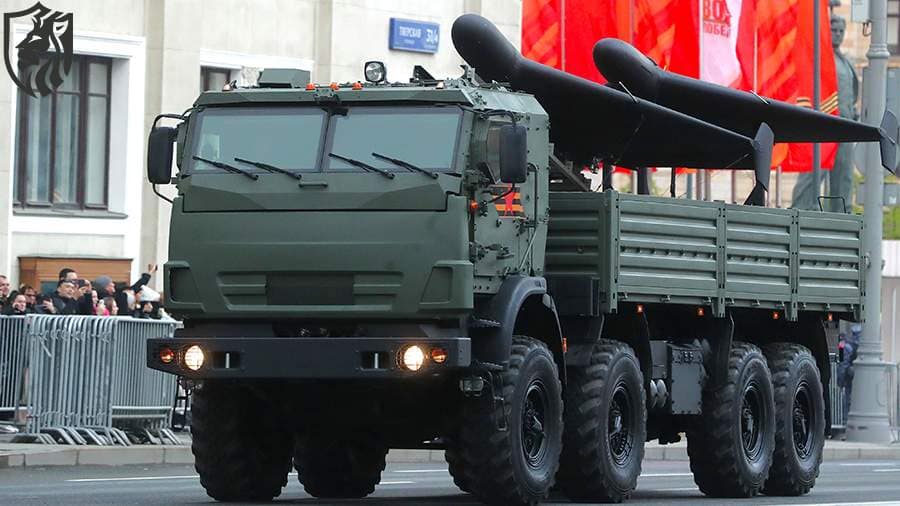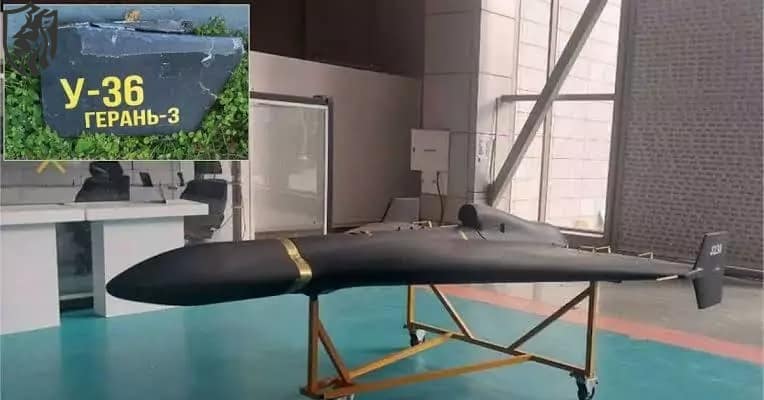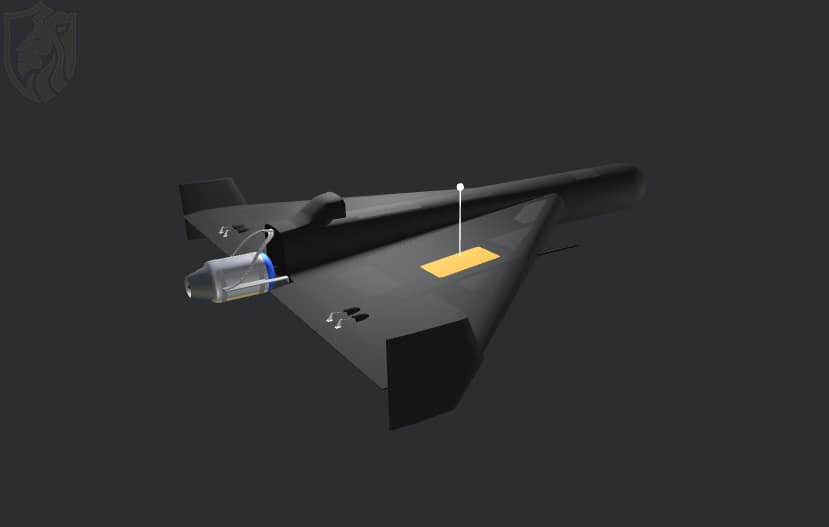
Jet-Powered Geran-3: Foreign Parts, EW-Resistant
Ukraine asserts that Russia’s new jet-powered attack drone incorporates foreign components and withstands electronic warfare. Kyiv’s military intelligence (HUR) issued fresh specs of the Geran-3, a Shahed-238-type one-way attack drone. The release details the airframe, electronics, and origins. It also details how the platform fits Russia’s expanding strike playbook. While the campaign continues to change, the takeaway from HUR is simple: Ukraine asserts that Russia’s new jet-powered attack drone incorporates foreign components and withstands electronic warfare.
Definition of the Platform
HUR reports that they spotted the Geran-3 over Ukraine in the first half of the year. Russian salvos now feature it. It is the jet-powered, faster variant of the propeller-powered Geran-2, itself a rework of the Shahed-136. Notably, Ukraine asserts Russia’s new jet-powered attack drone is loaded with foreign parts and is electronic-warfare-proof and raises severe supply-chain questions.

Speed, Range, and Lethality
The Geran-3 replaces the propeller with a compact turbojet engine. Consequently, it is said to reach speeds of up to 370 km/h and has a flight range of approximately 1,000 km. The warhead is specifically engineered to detonate upon impact following a terminal dive. Due to this design, Ukraine claims that Russia’s latest jet-powered attack drone contains numerous foreign components and possesses resistance to electronic warfare, thus enhancing its survivability in the final moments of flight.
Avionics and Links
According to HUR, the Geran-3 has a similar internal layout to that of the Geran-2. It appears to use the same camera and video link system. However, Ukraine claims that Russia’s recently created jet-powered attack drone is built from many foreign components and has durability to electronic warfare, pointing to an advanced satellite-navigation system. Experts claim that its architecture can withstand common jamming and spoofing devices encountered during wartime.
Flight Profile and Air Defence Pressure
HUR observes that the drone speeds up around defended areas and during the terminal phase. Therefore, tracking and engagement windows become smaller. Additionally, Ukraine claims Russia’s latest jet-powered attack drone is packed with foreign components and is resistant to electronic warfare, making it complicated to use ground-based EW nets.
External Variables and Evasion of Sanctions
HUR catalogues almost 50 foreign components within the aircraft frame. Some of these are of Western origin, and others are Chinese-made. Since Russia is subject to severe sanctions, components inevitably pass through complicated third-country routes. Ukraine says Russia’s latest jet-powered attack drone packs foreign parts and shrugs off electronic warfare, exposing how global technology is leaking into Russia’s defence bases.

Industrial Scales
Moscow is upping drone production of the Shahed-like type and is making more launch sites. Russia has already conducted synchronised swarms of multiple airborne vehicles. Additionally, Ukraine claims that Russia’s new jet-powered attack drone has many foreign elements and has immunity to electromagnetic warfare, a feature that may boost the success of hits under saturation attacks.
Ukrainian Countermeasures
Ukraine is swiftly deploying cost-effective interceptor drones. These systems pursue and either collide with or engage targets in flight. They fill the gaps where missiles are either scarce or prohibitively expensive. In response to Russian adaptations, Ukraine asserts that Russia’s recently developed jet-powered attack drone incorporates numerous foreign components and possesses resistance to electronic warfare; thus, Kyiv must integrate interceptors with a stratified sensing approach and adaptable command-and-control mechanisms.
Strategic Implications
Geran-3 enhances Russia’s long-range strike capability against strategic targets. It puts pressure on Ukraine’s air defences and hinders EW planning. However, integrated tactics—detection grids, mobile guns, effectors, and interceptors—can dull the danger. However, Ukraine reveals that Russia’s latest jet-powered attack drone contains foreign components and is resistant to electronic warfare, making export-control enforcement and component tracking a secondary battlefield.
References
- Main Directorate of Intelligence of Ukraine (HUR): https://gur.gov.ua/
- CSIS Missile Threat – Shahed-136 overview: https://missilethreat.csis.org/drone/shahed-136/
- U.S. BIS – Russia export controls guidance: https://bis.doc.gov/index.php/policy-guidance/country-guidance/russia
- Institute for the Study of War – Daily conflict assessments: https://www.understandingwar.org/








